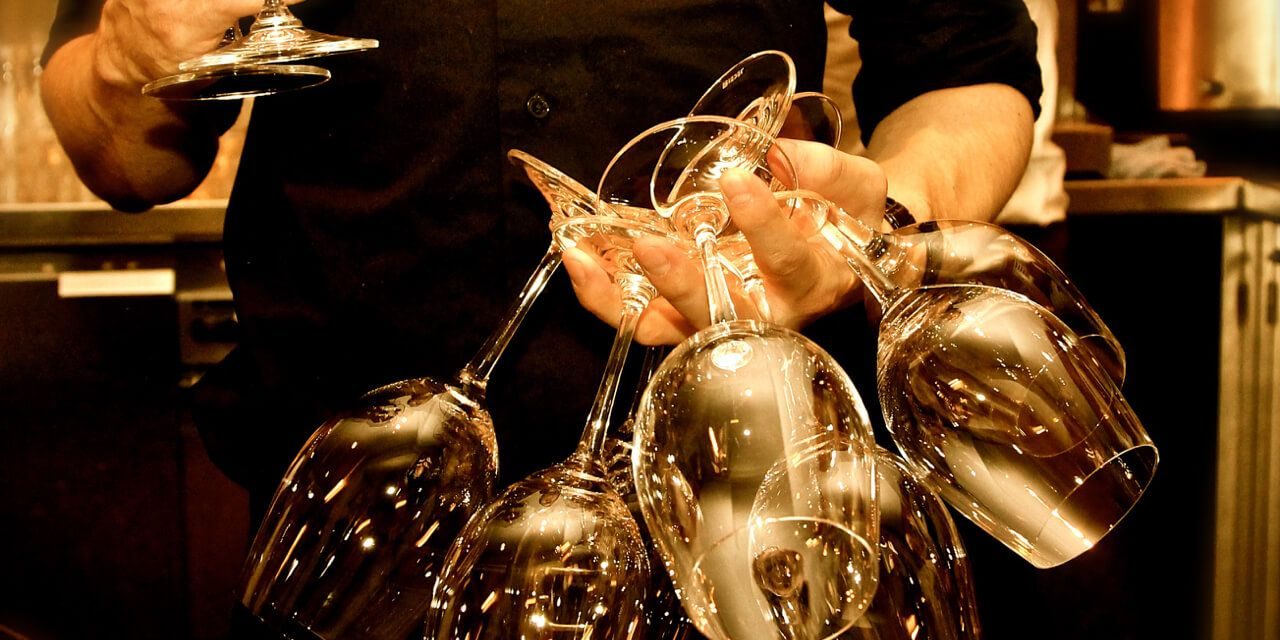by Randy Caparoso
Anyone who has worked successful restaurants in different places – on the East Coast, the West Coast, or anywhere in between – will tell you the same: Each market is different, but in many ways the same. Everywhere you go, wine lovers respond to pretty much the same things, no matter where they are.
Six rules of thumb that will always keep you on the straight and narrow, wherever you may be:
1. What’s the point of price gouging? A lot of sommeliers assume that when you brutally mark up a popular wine – say, 25 percent cost as opposed to your usual 33 percent to 36 percent – you’re doing yourself a favor by discouraging guests stuck on name-brands, and encouraging them to look at alternatives. No, you’re not. Guests aren’t stupid. They’ll shell out for wines they know, but will always remember that you made them pay, say, $75 for a wine that competitors are selling for $50. All you’re doing is making yourself look stupid and probably losing business for your restaurant.
2. Sheer volume never makes up for higher costs. It is possible to stimulate sales by selling wine at lower markups, but just slightly. Unless you can achieve crazy success, like a consistent doubling of dollar sales, lower prices rarely make up for profits lost by reduced markups. Besides, price is just one of many reasons why guests order wines. They’re attracted to comfort labels, but are also compelled by well reasoned, enthusiastic staff recommendations. They respond to promotions and are open to new wines highlighted in food contexts – the more special your dishes, the more compelling your wine recommendations. In fact, they love the idea of smaller glass portions – making it more physically possible to try several wines with a dish. Above all, they are motivated by quality – if a wine is truly good, they’ll keep buying it regardless of price, and love you for it.
3. It is not good to up sell. As self-evident as the concept of making big sales may seem, the objective of every successful restaurant is to wow guests, not to get them to spend as much as possible. Never take your staff’s eyes off the ball by exhorting them to do otherwise. If anything, check-building can hurt you. Do the math: Would you rather your guests pay $100 and feel a need to come back next week and dozens of times thereafter; or $1,000 and have them look back at their visit as a once-a-year, or even once-in-a-lifetime, experience? Unless you’re the The Four Seasons or French Laundry, it’s better to keep check averages down rather than up.
4. Don’t be a snob. The sommelier trade has a bad enough reputation as it is for focusing exclusively on “somm wines” – esoteric selections that do not appeal to the common palate. Many guests, for instance, still prefer a soft, fruity wine like White Zinfandel, but selections of bone dry, sharply acidic German Riesling or Savennières sec won’t do it for them. The logical thing is German Kabinett or Spätlese, which obviously can be as glorious as any wines – these wines are more special, but still appeal to a White Zinfandel palate. Can’t stand typical California Chardonnay? Join the club; but there are still lots of California producers crafting innovative or terroir driven Chardonnays chill enough to melt the coldest sommelier’s heart, and appeal to stubborn Chardonnay lovers. In short, you need to compete with a unique, interesting wine program, but not at the expense of alienating possible guests for life by ignoring their tastes.
5. A great wine list does not equal a great restaurant. Which is not to say that a crafty, comprehensive or award winning wine list is useless. Only that it does not automatically correspond to incredible guest experiences. A celebrated chef, for instance, does not need to offer a thousand dishes; just a few exquisite ones. In fact, an overstuffed wine list only prevents you from being flexible – being able to adjust your selections according to seasons, the time of day, special dishes, or even your latest whims or unexpected discoveries available in very short supply. Don’t let a bulky wine program drag you down. And face it: A lot of guests are turned off by big, confusing, show-off wine lists. People don’t say K.I.S.S. for nothing. Which brings up our final rule…
6. Wine is a condiment, not the main event. Let’s get real: Wine is rarely better than the fourth, fifth or sixth reason why guests return. Most return business is garnered by outstanding service, fantastic food, or favorable location, not to mention factors like value or atmosphere. That’s why restaurants exist – so people can eat and be served with a reasonable degree of convenience and fulfillment. Which is why it only makes sense that the best wine programs are those with affinities built into them; consisting of wines chosen for specific purposes, like a chef’s dishes, rather than to inflate a wine buyer’s ego or to impress other industry peeps.
Long ago Danny Meyer once said that identifying one of his places as a “wine restaurant” is like calling Yankee Stadium a “mustard ballpark.” You can be sneaky by choosing wines that do an incredible job of amplifying the experience. But in the best restaurants, wines compliment the main event, not detract from it.
About Randy Caparoso: Randy was a full-time restaurant wine professional from 1978 to 2001, and now lives among ancient vines in Lodi. As a founding partner and former vice president of the Roy’s family of restaurants, he was Santé’s first Restaurant Wine & Spirits Professional of the Year (1998), and Restaurant Wine’s Wine Marketer of the Year (1992 & 1999).







